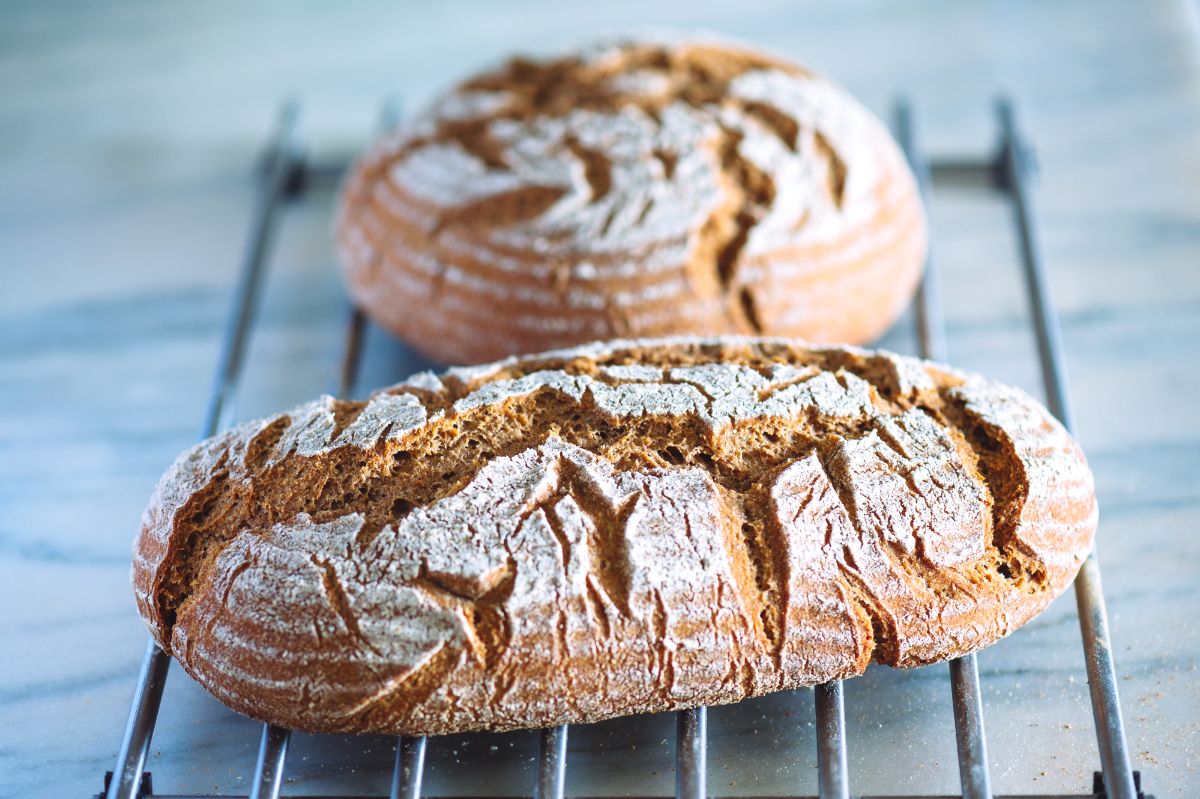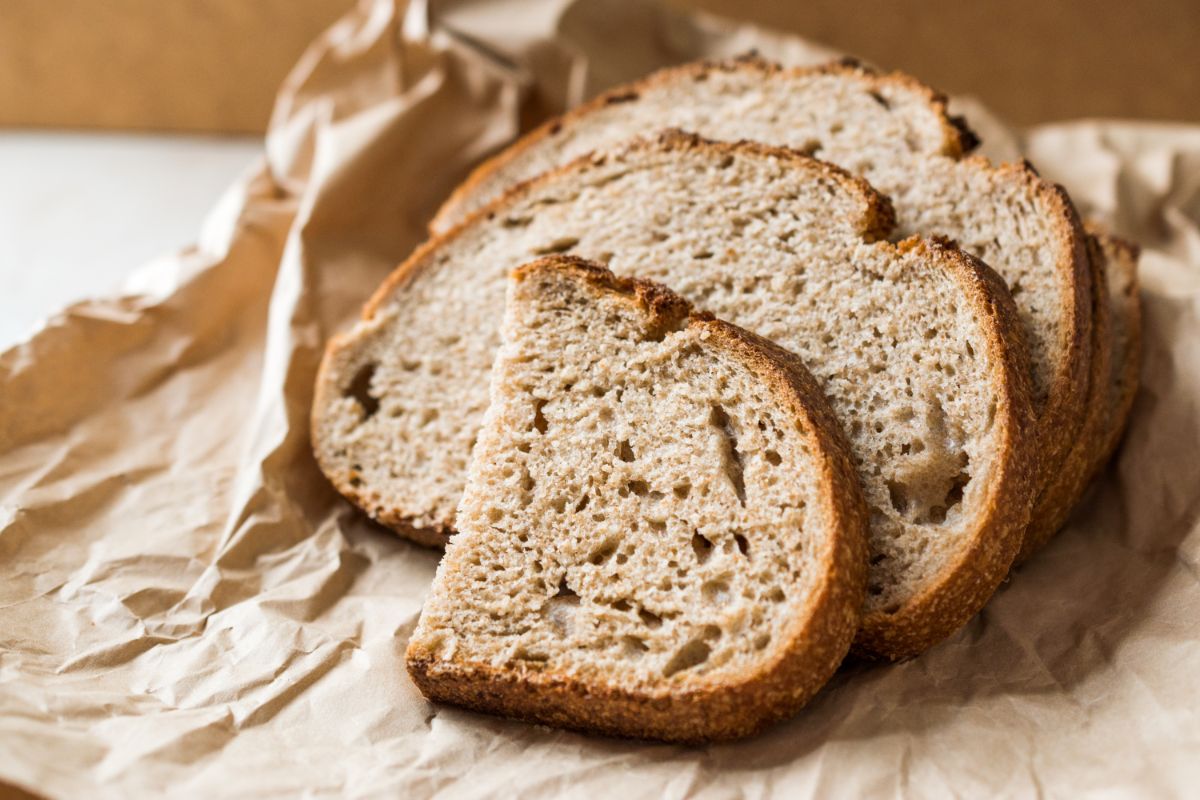When someone is diagnosed as a diabetic, he or she has to change the diet to maintain their health.

Most diabetics think that giving up bread would be quite close to the end of the world. But with a bit of research on diabetes and healthy diets, they can learn that not all bread is the same.
Some can actually improve your health and benefit from a diabetic diet. That can also have other health benefits as well, such as improving intestinal health.
As you already know, sourdough bread is a healthy alternative food staple to other kinds of available bread.
But why is it better than others? Let’s explore the simple truths about this unique and tasty food alternative and try to clear some of the confusion that exists while we are at it.
The Blood Glycemic Index of Different Types of Bread
Our bodies use blood glucose to give us the energy we need to work and play.
The Glycemic Index is a measure of the carbohydrates in our food. This can help us to understand how the food we eat changes the blood glucose levels in our bodies for better or worse.
Diabetics are closely aware of the Glycemic Index, especially those who control their diabetes mainly through diet.
They know that certain foods are more likely to affect them than others.
By using this index, they can adjust what they eat so that they can keep the lifestyle that they have grown accustomed to.
The Glycemic Index is measured on a 100-point scale. Foods that are valued at 70 or higher on this scale can exacerbate the body’s blood sugar levels.
This can cause an unhealthy blood sugar level and require further medical attention. In contrast, foods that have a Glycemic Index value of 55 or lower produce a more measured and slow increase in blood sugar level, which the body is more readily able to adapt to. Foods that fit into this category are more easily consumed by the body and release sugars slower.
Sourdough has a value of 53 on the Glycemic Index.
This means that it is a low-glucose food and fits into the needs of a diabetic diet.
But it is important to remember that this does not mean it will bring down your blood sugar level. Rather, it will slow the increase, allowing your body to better regulate the change.
In comparison to others, this is a much lower Glycemic Index. White bread has a Glycemic Index value of 75 and whole wheat bread has a value of 74. Both of these are high-glucose foods and can lead to irregular blood sugar spikes.
Sourdough and Blood Sugar
In my research, I started to wonder why this unique staple was better than others for a diabetic diet. I found that it is because of the longer fermentation process that it requires.

Most commercial and homemade bread use baker’s yeast, which creates a very uniform culture and requires a much shorter fermentation time.
In contrast, sourdough uses a culture that produces lactic acid in its starter, the same acid found in many dairy products.
This process also creates acetic acid, which is found in vinegar. Not only does this give this bread its unique taste, but the acetic acid helps the body produce gut bacteria that are necessary for digestion.
Our bodies are then able to better digest carbohydrates and regulate the blood sugar that is accumulated from them.
Fibers and Sourdough Bread
Not only the ones that suffer from diabetes can benefit from consuming sourdough bread.
For example, diverticulitis is an infection of the diverticula, the bulges or pouches that develop along the sides of the long intestine. When bacteria get caught in these sections of the long intestine, it can lead to pain or cramping in the abdomen. There can also be blood found when you go to the bathroom.
In more severe cases, diverticulitis can lead to abscesses, inter-intestinal scars, fistulas, severe bleeding, and peritonitis. There are serious medical conditions and require immediate professional attention.
All of this can sound scary, especially the more severe symptoms. However, diet can help with this as well. Diets that are high in fiber can have a beneficial effect on intestinal health. It is recommended that the daily fiber intake of adults is between 25 and 30 grams from food and not health supplements or other sources.
When it comes to choosing good sourdough bread, it makes sense that a whole wheat choice will have a higher fiber content than its white bread counterpart.
To give you an idea of the differences in fiber content, a slice of whole wheat or multigrain has roughly 1.9 grams of fiber. A slice of sourdough bread has between 2 and 4 grams of fiber.
Making a sandwich using a couple of slices can really boost your daily fiber intake and help you to reach those recommended levels.
How to Choose a Good Sourdough Bread
I have shown that no two breads are alike when considering their Glycemic Index, fermentation processes, or fiber counts. But this can also be said when comparing different kinds of sourdough as well.
In order to get the benefits of the long fermentation process, it must rely solely on the starter to get the right balance of acids. Commercial producers often cheat on this process. They add baker’s yeast to the culture. While there is enough of the starter to give it a unique taste, it does not offer the same health benefits.
Check the ingredient label of anything you buy at a grocery store. Make sure that there are no hidden ingredients that should not be there.
True sourdough should consist of only flour, salt, and water. Anything else is just filler that detracts from the real deal. This may mean that you have to make your purchases at a local baker and not at a large grocery store.
The Final Word on Sourdough and Diabetes
I know that diabetic diets can seem bland, dry, and tasteless. That is the whole reason I embarked on a mission to find better food options. We all eat several times throughout the day so we may as well enjoy it. There is no need to compromise on flavor when making healthy choices.
Sourdough provides many benefits to the diabetic individual. For those who have trouble cutting out carbohydrates, this alternative can be a good substitute to other bread. The higher fiber count is also good for your long intestine too.
I hope this gives you a better understanding of how this unique staple can be a positive food choice for you. Be sure to check the labels of anything you buy at a grocery store to make sure that you know what you are getting.
And remember, having diabetes does not mean an end to enjoying food. You just need to be smart about it. Do your research, find out what is right, and go from there.
*This content is not intended to be a substitute for professional medical advice, diagnosis, or treatment. Always seek the advice of your physician or other qualified health provider with any questions you may have regarding your medical condition.

